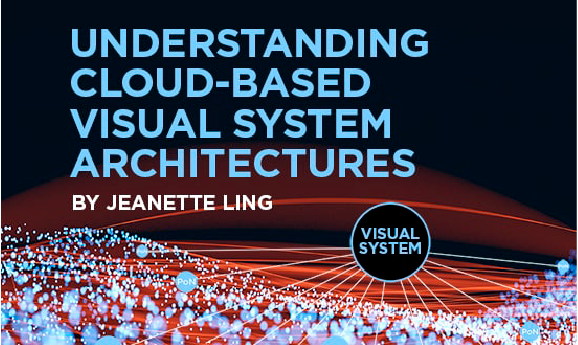Understanding Cloud-Based Visual Systems - Dedicated Computing

Written by: Jeanette Ling
The Government's "Cloud First" policy of 2011 set an accelerated course of government technology migration to cloud resources. The benefits of cloud services and infrastructure are appealing for use in simulation and training for many reasons, including the ability to provide point-of-need (PoN) simulation, freedom from hardware maintenance and upgrades, reduction of capital expenditure and hardware footprint, and practically limitless resources that allow ease of scalability. Evaluation of the fitness of visual system service for migration to the cloud as per the cloud-first guidance of readiness and value is highly dependent on the intended use case and architecture of a cloud-based simulator.
 - Click image to download the Understanding Cloud-Based Visual System Architectures white paper
- Click image to download the Understanding Cloud-Based Visual System Architectures white paper
While attractive in concept, serious limitations in training quality and effectiveness can exist depending on the implementation strategy of a cloud-based visual system. This paper explores the technical challenges and functional ramifications of distributing visual system components across the cloud compared to on-premises resources.
Topics include: Latency, performance, distributed visual system architectures, latency tolerance of basic visual system components, and edge device computing.
A wide spectrum of use cases exist within the simulation and training realm, and cloud-based visual systems must provide a flexible and adaptable hybrid cloud architecture to achieve required goals across very diverse training needs and physical infrastructure.
To read the full white paper CLICK HERE
About the author
Jeanette Ling is a Principal Software Engineer in the Visual Systems group of Rockwell Collins with 30 years of experience in the industry. Her career has focused on personal computer (PC)-based visual systems that use consumer-off-the-shelf (COTS) graphics cards, and includes pioneering work on some of the first true 3D graphics cards available for PCs as an engineer with Evans & Sutherland. Ms. Ling has held primary engineering roles in producing visual systems for key military programs that span the range from fast-jet to ground vehicles, including full mission simulator (FMS) dome systems for the F-35 Joint Strike Fighter (JSF), helicopter simulators for Aviation Combined Arms Tactical Trainer (AVCATT), and ground warfare training systems for Close Combat Tactical Trainer (CCTT). Ms. Ling holds a B.S. in Computer Science and has a patent pending related to visual system render performance improvements.
To stay up to date with all the latest Dedicated Computing content, stop by the Dedicated Computing Library to read additional white papers.

